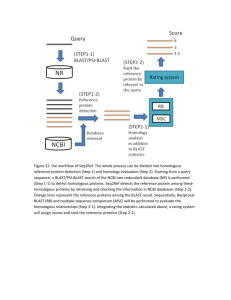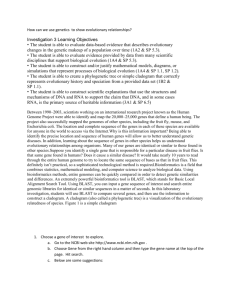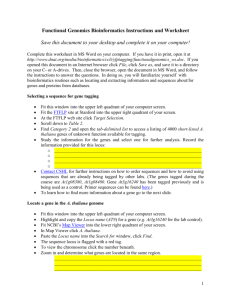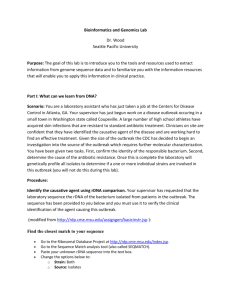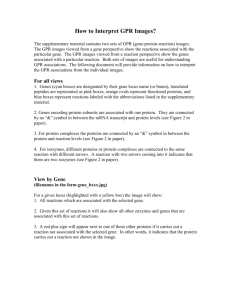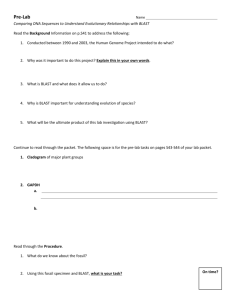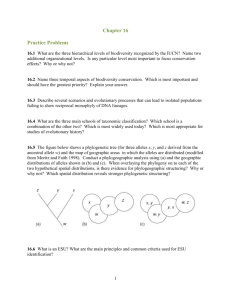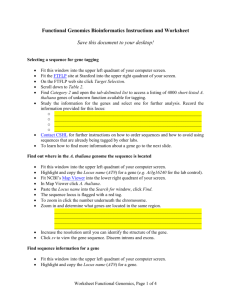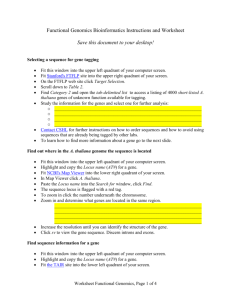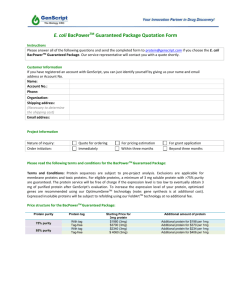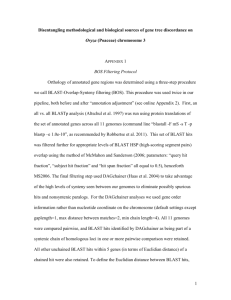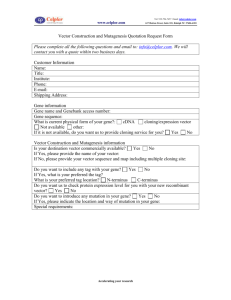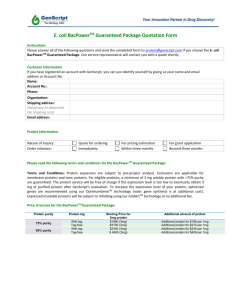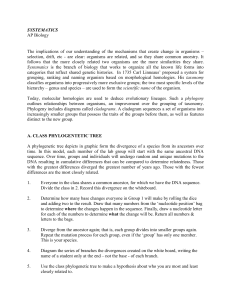Small project 1
advertisement
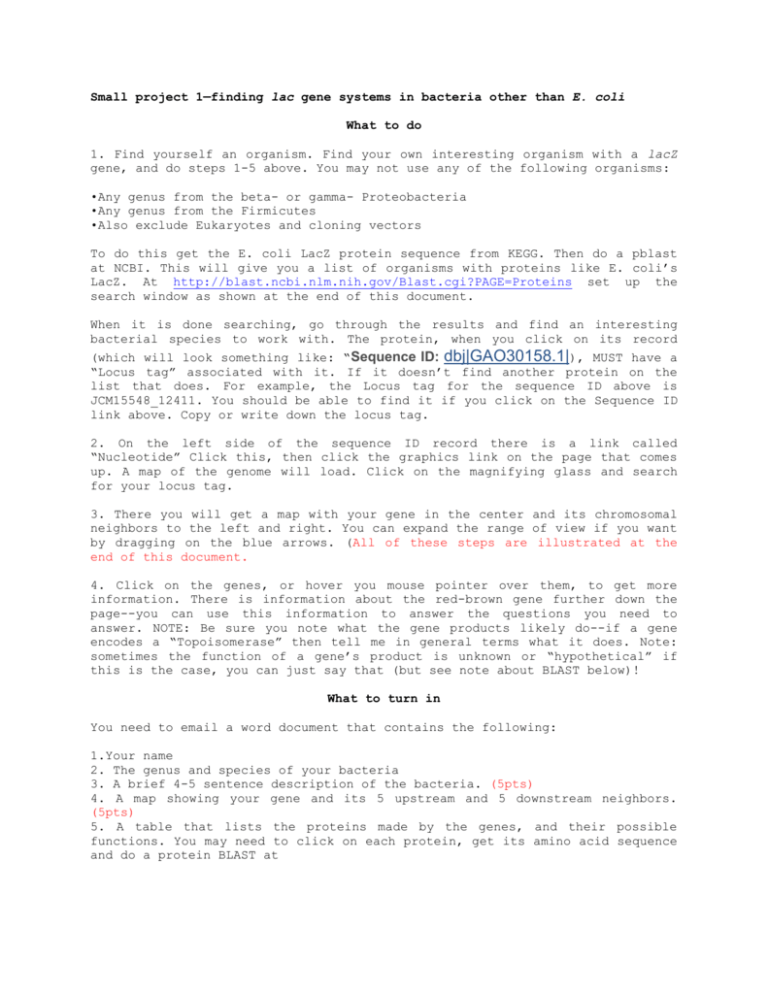
Small project 1—finding lac gene systems in bacteria other than E. coli What to do 1. Find yourself an organism. Find your own interesting organism with a lacZ gene, and do steps 1-5 above. You may not use any of the following organisms: •Any genus from the beta- or gamma- Proteobacteria •Any genus from the Firmicutes •Also exclude Eukaryotes and cloning vectors To do this get the E. coli LacZ protein sequence from KEGG. Then do a pblast at NCBI. This will give you a list of organisms with proteins like E. coli’s LacZ. At http://blast.ncbi.nlm.nih.gov/Blast.cgi?PAGE=Proteins set up the search window as shown at the end of this document. When it is done searching, go through the results and find an interesting bacterial species to work with. The protein, when you click on its record (which will look something like: “Sequence ID: dbj|GAO30158.1|), MUST have a “Locus tag” associated with it. If it doesn’t find another protein on the list that does. For example, the Locus tag for the sequence ID above is JCM15548_12411. You should be able to find it if you click on the Sequence ID link above. Copy or write down the locus tag. 2. On the left side of the sequence ID record there is a link called “Nucleotide” Click this, then click the graphics link on the page that comes up. A map of the genome will load. Click on the magnifying glass and search for your locus tag. 3. There you will get a map with your gene in the center and its chromosomal neighbors to the left and right. You can expand the range of view if you want by dragging on the blue arrows. (All of these steps are illustrated at the end of this document. 4. Click on the genes, or hover you mouse pointer over them, to get more information. There is information about the red-brown gene further down the page--you can use this information to answer the questions you need to answer. NOTE: Be sure you note what the gene products likely do--if a gene encodes a “Topoisomerase” then tell me in general terms what it does. Note: sometimes the function of a gene’s product is unknown or “hypothetical” if this is the case, you can just say that (but see note about BLAST below)! What to turn in You need to email a word document that contains the following: 1.Your name 2. The genus and species of your bacteria 3. A brief 4-5 sentence description of the bacteria. (5pts) 4. A map showing your gene and its 5 upstream and 5 downstream neighbors. (5pts) 5. A table that lists the proteins made by the genes, and their possible functions. You may need to click on each protein, get its amino acid sequence and do a protein BLAST at http://www.ncbi.nlm.nih.gov/blast/Blast.cgi?PROGRAM=blastp&BLAST_PROGRAMS=bla stp&PAGE_TYPE=BlastSearch&SHOW_DEFAULTS=on&LINK_LOC=blasthome in order to get information on what the proteins do. Do this if all you get are “hypothetical protein” descriptions for all of your neighboring genes. (10pts) 6. A paragraph describing which of the 10 genes in the map you think might encode proteins that work with your LacZ. Also include ones that may encode regulators. (15 pts) This is due by 10/20/15 at midnight. Email me a word document--please title it “First Project” and title your document “YourLastname_Project1 \ The nucleotide sequence! Click on Graphics. the genome—click on the magnifying glass Search for the locus tag Found it, click on the tag and the map will change and your locus will be in the center. There it is—you can expand the view by dragging the blue arrows.

